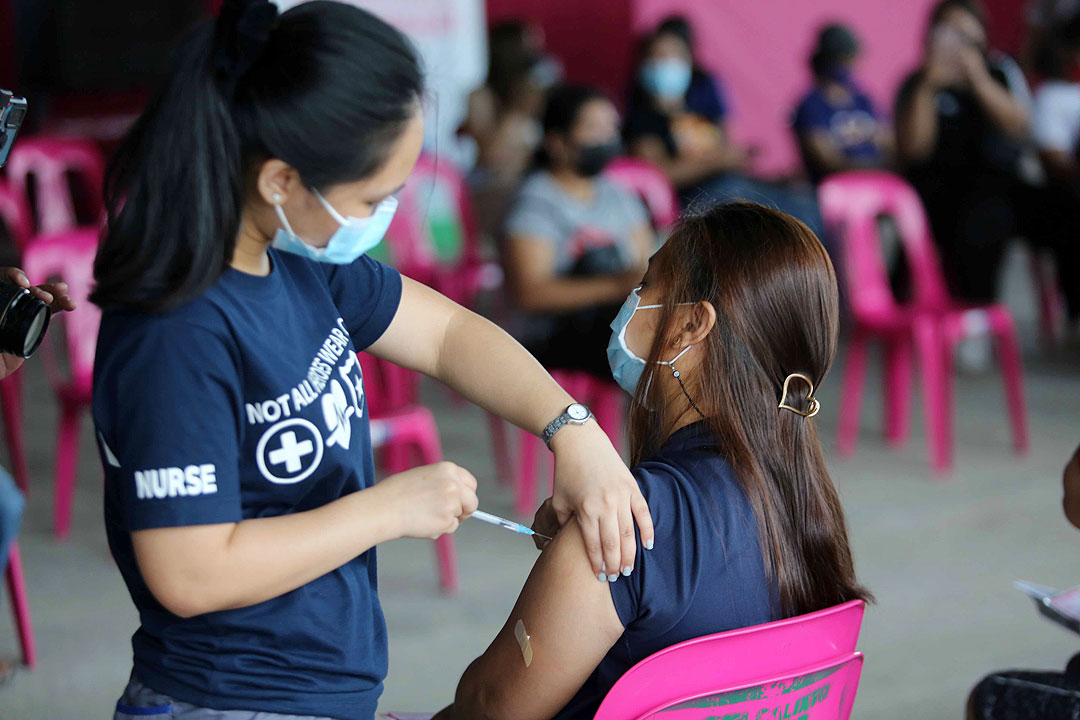Coronavirus cases seen falling back to ‘low levels’

By Kyle Aristophere T. Atienza, Reporter
DAILY coronavirus cases in the Philippines would likely fall to fewer than 1,000 starting next week, according to pandemic monitoring group OCTA.
“We should be seeing fewer than 1,000 new cases daily. The situation for COVID-19 will be back to low levels,” OCTA fellow Fredegusto P. David said in a Facebook Messenger chat.
He said any possible COVID-19 infection wave in the future would likely become manageable and would not overwhelm hospitals.
“COVID-19 will be back with another wave but we don’t expect it to be different from the other waves we saw this year and last year,” he said.
On Saturday night, Mr. David said the Philippines posted 878 new cases with 1,328 new recoveries. No COVID-19-related deaths were reported during the day, when active cases in the country hit more than 11,600.
Metro Manila accounted for 206 of the new cases recorded on June 10, followed by Cavite with 57, Iloilo and Pampanga with 48 each, and Bulacan with 52 cases.
Cagayan province in the country’s north was also on the list with 37 new cases, Laguna with 34, Rizal with 26, Bataan with 23, and Negros Occidental in central Philippines with 22.
On June 5, health authorities reported that the country had recorded 9,107 COVID-19 infections from May 22 to June 4 with a daily average of 1,301 — 22% lower than the average cases per day from a week earlier.
There were 77 severe and critical cases during the May 22-June 4 period, when three new COVID-19 related deaths were recorded.
Last month, when daily COVID-19 infections in the country had hit almost 2,000, the Private Hospitals Association of the Philippines, Inc. (PHAPI) said patients admitted in private hospitals who tested positive for COVID-19 had increased.
It said most of the admissions were “coincidental COVID,” a label used for patients who were admitted for different health issues but tested positive for COVID-19 when screened.
President Ferdinand R. Marcos, Jr., in May, said the “worst is over” for COVID-19, noting that the Philippines can now focus on boosting the economy.
He made the statement after the World Health Organization (WHO) had declared that COVID-19 is no longer a global public health emergency.
Mr. Marcos, 65, has been citing supposed growing immunity from COVID-19 among Filipinos.
Based on the Department of Health’s (DoH) May 29 to June 4 bulletin, a total of 78.44 million had been fully vaccinated against COVID-19. Of these, only 23.81 million had received booster shots.
The Philippines’ new Health secretary, Teodoro Herbosa, has yet to discuss how the Philippines plans to deal with the pandemic.
Maria Rosario S. Vergeire, who temporarily headed the Health agency prior to Mr. Herbosa’s appointment, said in May that the inter-agency task force handling the country’s pandemic response had submitted its recommendations to Mr. Marcos Jr. in light of the WHO’s declaration.
As Health secretary, Mr. Herbosa will deal with a weak healthcare system, which has struggled with a critical shortage of healthcare workers.
NURSES
Last week, the new DoH chief said he will consider allowing nursing graduates without a license to work in government hospitals.
Under the proposal, nursing graduates will be given enough time — probably five years — to take and pass the licensure examination while employed, Mr. Herbosa said.
About 40% to 50% of nurses in private hospitals have quit their job in the last two years due to salary issues, the PHAPI earlier said.
As of December last year, the monthly salary for nurses in private hospitals averaged P12,000, while those working in the public sector were receiving an average pay of P35,097, according to the Filipino Nurses United.
In a statement at the weekend, Quezon City Rep. Marvin Rillo, vice chairperson of the House committee on higher and technical education, urged high school graduates to pursue a nursing program in college, citing a “very promising” job outlook.
“High school graduates should include nursing in their list of college options if they want a stable and lucrative occupation in the years ahead,” he said.
“Nurses are in great demand while the supply is short, so we would urge both male and female high school graduates to consider taking the nursing career path,” he added.
“We believe that nursing is a noble profession. We welcome his call for the youth to take up nursing but we do hope that it is for the purpose of serving our own people, and development of our nation,” the Filipino Nurses United told BusinessWorld.
The group said Filipino legislators should see to it that their proposals would always advance the nurses’ demands for higher pay and better working conditions “while ensuring that public health will be prioritized so that young nurses will not be disillusioned and frustrated with our own health care system pushing them more to seek better jobs abroad.”
The WHO, in a 2020 report, said that without action, there will be a shortfall of 4.6 million nurses worldwide by 2030.
In the Philippines, “the shortfall of nurses is expected to be 249,843 by 2030, unless greater investment is made now to retain them in the local health sector,” Mr. Rillo said, citing a report.
Mr. Rillo has been seeking a 75% increase in the minimum starting pay of nurses employed in government hospitals.
His bill seeks to increase the entry-level monthly pay of nursing staff in public hospitals to P63,997 from P36,619.
The Commission on Higher Education in July last year removed the decade-old moratorium on the opening of new BSN programs.
“The lifting of the freeze means that universities and colleges that currently do not offer the BSN program may now apply, and comply with the requirements, to offer the four-year degree course,” Mr. Rillo said.



